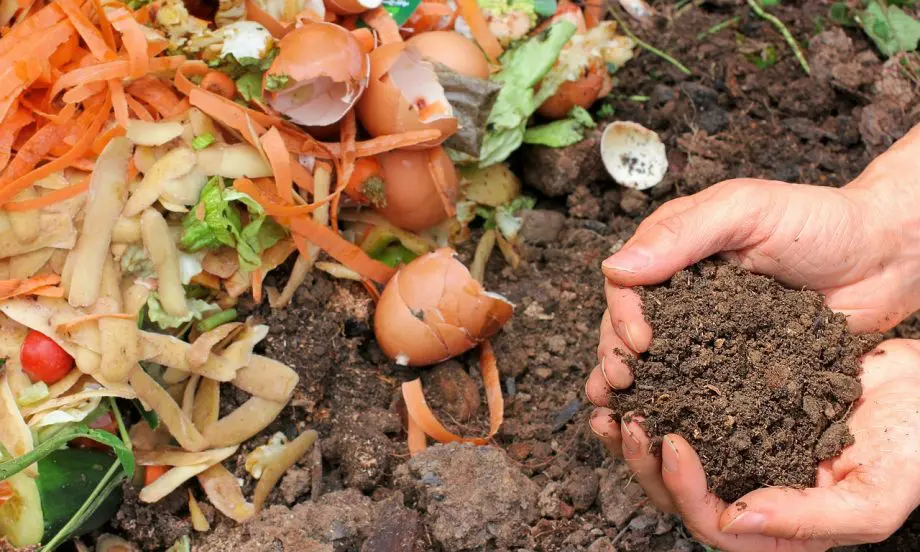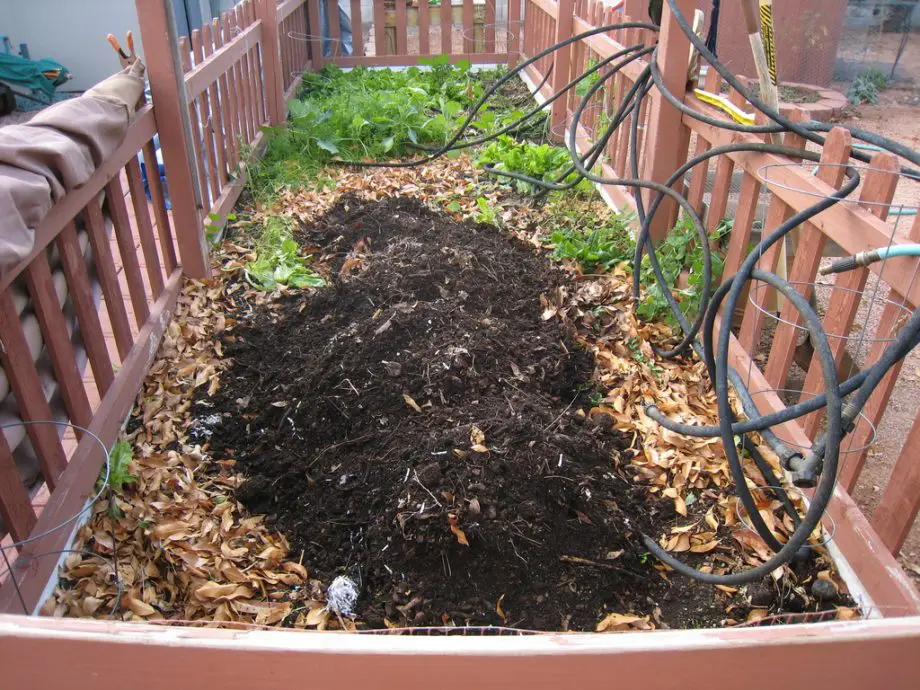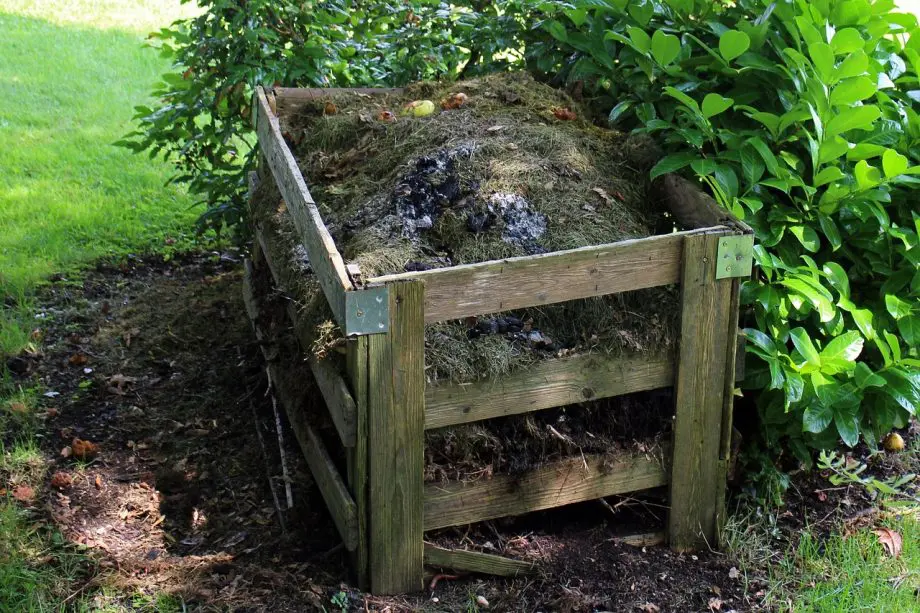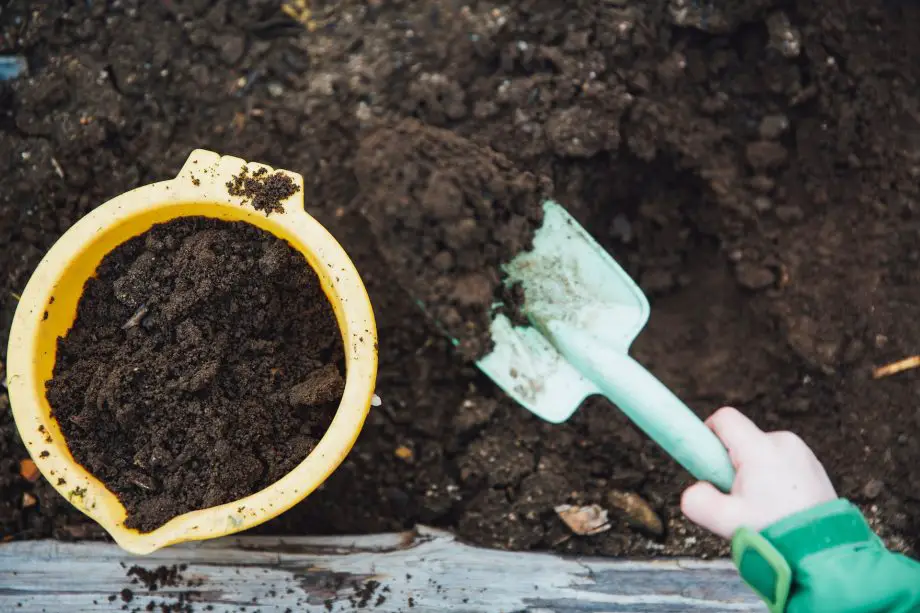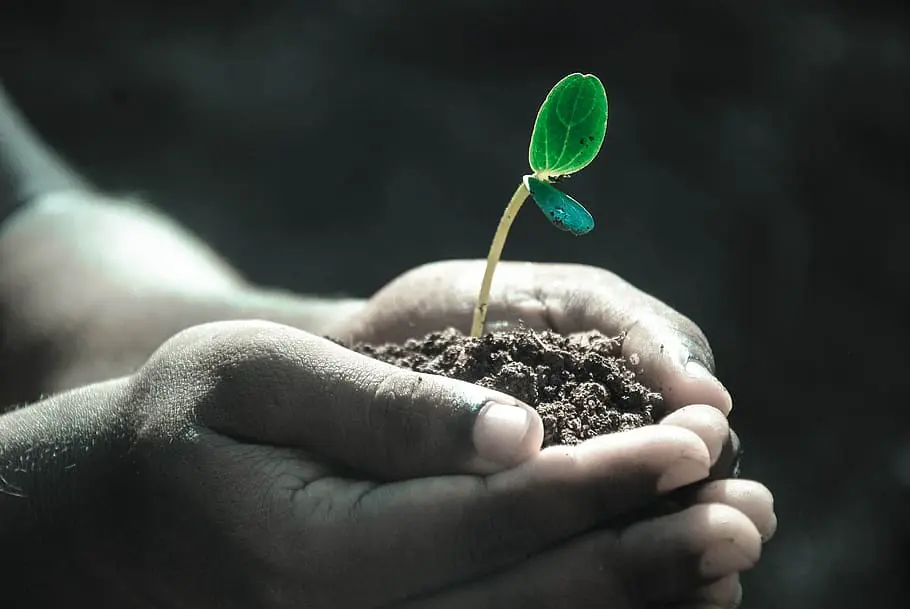Explore the world of composting in our latest post, find out Are Tumbling Composters Better? Uncover the pros, cons, and everything you need to know!
Are tumbling composters better? It’s a question that’s been on the minds of many gardening enthusiasts and eco-conscious individuals alike.
As we all strive to reduce waste and enrich our gardens, the method of composting we choose can make a significant difference.
In this article, we’ll delve into the world of tumbling composters, exploring their benefits, drawbacks, and how they stack up against traditional composting methods.
So, let’s get started and uncover whether tumbling composters truly are a better choice for your composting needs.
Are Tumbling Composters Better?
Are tumbling composters better? This question has likely crossed your mind if you’re considering stepping up your composting game.
Well, you’re in the right place to find out! In this comprehensive guide, we’ll dissect the ins and outs of tumbling composters, comparing them to traditional composting methods, and discussing their pros and cons.
We’ll also delve into the factors that affect composting in tumblers and provide answers to some frequently asked questions.
By the end of this post, you’ll have a well-rounded understanding of whether tumbling composters are the right fit for your composting needs.
So, let’s dive in and start our composting journey together!
Definition of Tumbling Composters
Let’s start with the basics, shall we? Tumbling composters, as the name suggests, are composting units that you can tumble or rotate.
Picture a drum or barrel that’s off the ground, mounted on a stand or frame.
This design allows you to easily turn the compost materials inside, promoting faster decomposition.
Unlike traditional compost bins or heaps that sit stationary on the ground, tumbling composters bring a spin (quite literally!) to the composting process.
They’re all about making composting more efficient and user-friendly, but are they better? We’re about to find out!
Brief Overview of the Article
In this article, we’re going on a deep dive into the world of tumbling composters.
We’ll explore everything from how they work to the different types available.
We’ll weigh their pros and cons and compare them to traditional composting methods.
We’ll also discuss the factors that affect composting in tumblers and even tackle some of the most frequently asked questions about these composting devices.
By the end of this journey, you’ll have a comprehensive understanding of tumbling composters and be able to make an informed decision about whether they’re the right choice for your composting needs.
So, let’s get this composting adventure rolling!
Understanding Composting
Before we delve into the specifics of tumbling composters, it’s important to have a solid understanding of composting itself.
Composting is like a magic trick where you turn everyday kitchen scraps and garden waste into nutrient-rich gold for your plants.
It’s a natural process that transforms organic material into a soil conditioner, rich in nutrients, and beneficial to our gardens.
But how does this transformation happen? What makes composting so important? And what are the different methods we can use to compost at home?
In this section, we’ll answer all these questions and more, setting the stage for our deep dive into tumbling composters.
So, let’s unravel the mystery of composting together!
The Composting Process
Composting, at its core, is a natural process where organic materials decompose into a nutrient-rich soil conditioner.
But how does this happen? Well, it’s all thanks to the hard work of microorganisms.
When you toss your kitchen scraps and garden waste into a compost pile, these tiny creatures get to work, breaking down the organic matter.
They need a balanced diet of carbon-rich materials (like dry leaves or newspaper) and nitrogen-rich materials (like vegetable peels or coffee grounds).
Add in some air and moisture, and you’ve got the perfect environment for composting to occur.
Over time, these materials transform into compost, a dark, crumbly substance that’s often referred to as ‘black gold’ for its nutrient richness.
Importance of Composting
Now, you might be wondering, why go through all this trouble? What makes composting so important?
The answer lies in the numerous benefits composting offers.
Firstly, it’s a fantastic way to reduce waste. By composting, we can divert a significant amount of our household waste from the landfill.
Secondly, composting is great for our gardens. The compost produced is rich in nutrients, improving soil health and promoting plant growth.
Lastly, composting is beneficial for the environment. It helps to reduce greenhouse gas emissions from landfills and contributes to the conservation of soil and water.
So, by composting, we’re not just creating nutrient-rich soil, we’re also playing our part in protecting our planet.
Different Methods of Composting
When it comes to composting, there’s no one-size-fits-all method.
Depending on your space, time, and resources, you can choose from several different composting methods.
The most common method is composting in a heap or bin. This involves simply piling up your organic waste in a corner of your garden or in a dedicated compost bin and letting nature do its work.
Then, there’s vermicomposting, where you use worms to help break down the organic material.
And of course, there’s tumbling composting, which we’re focusing on in this article.
Each method has its own pros and cons, and the best one for you depends on your specific needs and circumstances.
We’ll delve deeper into how tumbling composting compares to these other methods later in the article. Stay tuned!
What are Tumbling Composters?
Now that we’ve got a solid understanding of composting under our belts, it’s time to turn our attention to the star of the show: tumbling composters.
What are they exactly? How do they work? And what different types are available?
In this section, we’ll explore these questions and more, giving you a comprehensive understanding of these intriguing composting devices.
So, if you’ve ever wondered about the ins and outs of tumbling composters, you’re in the right place.
Let’s dive in and uncover the world of tumbling composters together!
Description of Tumbling Composters
Tumbling composters are a type of composting system that, as the name suggests, involve tumbling.
Picture a large drum or barrel, mounted on a stand or frame, off the ground.
This drum is where you put your compost materials. The design allows the drum to be easily rotated or tumbled, mixing the compost materials inside.
This tumbling action is what sets these composters apart from traditional compost bins or heaps.
They’re typically made from durable materials like plastic or metal and come with a door or lid for easy access to add materials or remove finished compost.
How Tumbling Composters Work
So, how do these tumbling composters work? The process is quite simple.
You start by adding your compost materials into the drum. Remember, you need a mix of green (nitrogen-rich) and brown (carbon-rich) materials.
Once you’ve added your materials, you close the lid and give the drum a few good spins.
This rotation mixes the materials, helping to aerate the compost and speed up the decomposition process.
The enclosed design also helps to retain heat, which further accelerates composting.
You’ll need to continue adding materials and regularly turning the drum until the compost is ready, which can be anywhere from a few weeks to a few months, depending on various factors.
Varieties of Tumbling Composters
When it comes to tumbling composters, there’s quite a variety to choose from.
They come in different shapes and sizes, from compact models suitable for small gardens or balconies to larger ones for those with more space or larger volumes of waste.
Some tumbling composters are single-chambered, meaning you add and compost your materials all in one drum.
Others are dual-chambered, allowing you to add fresh materials to one chamber while the other chamber is busy composting.
This can be a handy feature if you’re producing a lot of compost materials and want to keep the composting process going continuously.
The type of tumbling composter that’s best for you will depend on your specific needs and circumstances.
Pros and Cons of Tumbling Composters
As with any method, tumbling composters come with their own set of advantages and disadvantages.
Understanding these pros and cons is key to determining whether they’re the right fit for your composting needs.
In this section, we’ll delve into the benefits and drawbacks of tumbling composters, giving you a balanced view of what these composting devices have to offer.
From ease of use to speed of composting, and from cost to capacity, we’ll cover it all.
So, let’s dive in and explore the pros and cons of tumbling composters together!
Advantages of Tumbling Composters
Tumbling composters come with a host of advantages that make them a popular choice for many composting enthusiasts.
Easy to Turn: One of the biggest benefits is the ease of turning.
The design of tumbling composters allows you to simply spin or rotate the drum to mix the compost materials.
This is much easier than turning a compost heap or bin with a pitchfork or shovel.
Faster Composting: Thanks to their enclosed design, tumbling composters can retain heat better than traditional compost bins or heaps.
This, combined with the easy aeration from turning, can speed up the composting process.
Pest Control: Tumbling composters are fully enclosed, which helps to keep pests out.
You won’t have to worry about rodents or other critters getting into your compost.
Odor Control: The enclosed design also helps to control odors.
While composting shouldn’t smell bad when done correctly, a tumbling composter can help contain any potential smells.
Convenience: Tumbling composters are typically compact and neat, making them a convenient choice for smaller gardens or urban settings.
They’re also easy to fill and empty, adding to their convenience.
Disadvantages of Tumbling Composters
While tumbling composters have many advantages, they also come with a few drawbacks that are worth considering.
Cost: Tumbling composters tend to be more expensive than simple compost bins or heaps.
The cost can vary depending on the size and features of the tumbler.
Capacity: Tumbling composters typically have a smaller capacity than compost bins or heaps.
This might not be an issue if you don’t have a lot of compost materials, but for larger households or gardens, it could be a limitation.
Weight: When full, tumbling composters can be quite heavy to turn. This is something to consider, especially if you have any physical limitations.
Balance of Materials: Getting the right balance of green and brown materials can be a bit trickier with tumbling composters.
Because they’re enclosed, it’s harder to add large amounts of browns (like leaves or straw) once the composter is in use.
Moisture Management: While the enclosed design helps retain moisture, it can also make it harder to manage if the compost gets too wet. Some models have drainage holes, but not all do.
Remember, the best composting method for you will depend on your specific needs and circumstances.
Weighing the pros and cons can help you decide if a tumbling composter is the right choice for you.
Tumbling Composters vs. Traditional Composting Methods
Now that we’ve explored the pros and cons of tumbling composters, it’s time to see how they stack up against traditional composting methods.
How do they compare to compost bins, heaps, or even worm bins?
In this section, we’ll pit tumbling composters against these traditional methods, comparing their features, ease of use, composting speed, and more.
This comparison will give you a clearer picture of where tumbling composters shine and where traditional methods might have the edge.
So, if you’re ready to dive into the composting showdown, let’s get started!
Comparison with Compost Bins
When comparing tumbling composters with traditional compost bins, a few differences stand out.
Ease of Turning: Tumbling composters are designed to be turned easily, simply by rotating the drum.
In contrast, turning compost in a bin usually requires a pitchfork or shovel, which can be physically demanding.
Speed of Composting: Tumbling composters, due to their enclosed design and easy aeration, can often produce compost faster than compost bins.
Pest Control: Both methods are generally good at keeping pests out, but tumbling composters, being fully enclosed and off the ground, have a slight edge.
Cost: Compost bins are typically less expensive than tumbling composters.
However, the ease of use and faster composting time of tumbling composters may justify the higher cost for some people.
Comparison with Compost Heaps
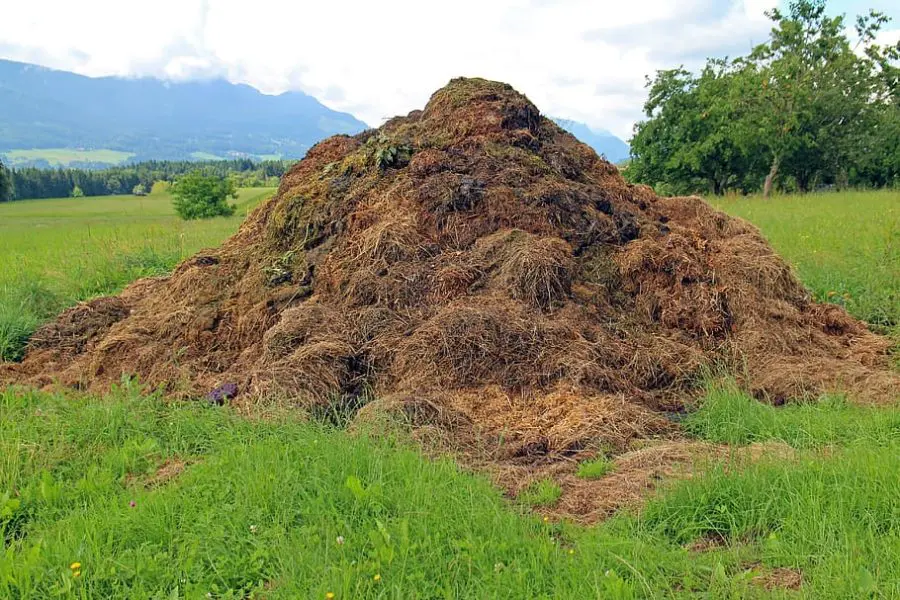
Compost heaps are the simplest form of composting, but they also come with their own set of challenges.
Ease of Turning: Like compost bins, turning a compost heap can be hard work.
Tumbling composters, with their easy-to-spin design, definitely have the advantage here.
Speed of Composting: Compost heaps can take a long time to break down, especially if they’re not turned regularly.
Tumbling composters can produce compost much faster.
Pest Control: Compost heaps can sometimes attract pests, especially if they’re not properly managed.
Tumbling composters, being fully enclosed, are better at keeping pests out.
Aesthetics: Compost heaps can be unsightly, especially in a small garden.
Tumbling composters, with their neat design, are more visually appealing.
Comparison with Worm Bins
Worm bins, or vermicomposting systems, use worms to help break down organic material.
Here’s how they compare to tumbling composters.
Ease of Use: Both systems are relatively easy to use, but tumbling composters don’t require the maintenance of a worm population.
Speed of Composting: Worm bins can produce compost quite quickly, but so can tumbling composters, especially if they’re turned regularly.
Quality of Compost: Worm bins produce worm castings, which are highly nutritious for plants.
Tumbling composters produce regular compost, which is also beneficial for soil health.
Temperature: Worm bins need to be kept in a location where the temperature is suitable for the worms.
Tumbling composters, being fully enclosed, can retain heat better and are less sensitive to external temperature changes.
Cost: Worm bins can be more expensive to set up initially, due to the cost of purchasing worms.
Tumbling composters have a higher upfront cost, but don’t have ongoing costs unless replacement parts are needed.
Factors Affecting Composting in Tumblers
Composting in tumblers can be a breeze, but it’s not just about tossing in your kitchen scraps and yard waste and giving it a spin now and then.
There are several factors that can influence the composting process in tumblers, and understanding these can help you get the most out of your composting efforts.
In this section, we’ll delve into these key factors, including moisture level, heat, air, and the use of a compost starter.
By gaining a deeper understanding of these elements, you’ll be well on your way to creating rich, nutrient-dense compost in your tumbler.
So, let’s turn our attention to these crucial composting factors!
Moisture Level
The moisture level in your compost tumbler plays a crucial role in the composting process.
Microorganisms that break down organic matter thrive in a damp environment. The compost should feel like a wrung-out sponge—not too dry, but not sopping wet.
If the compost is too dry, decomposition will slow down. On the other hand, if it’s too wet, it can become smelly and anaerobic conditions can develop, which are not conducive to effective composting.
To maintain the right moisture level, you might need to add water if the compost is too dry or add more brown materials (like leaves or shredded paper) if it’s too wet.
Heat
Heat is another important factor in composting.
As microorganisms break down organic matter, they generate heat, which in turn speeds up the decomposition process.
A well-functioning compost tumbler can reach temperatures of up to 140-160°F.
However, it’s important to note that if the compost gets too hot (above 160°F), it can kill off beneficial microorganisms.
Therefore, regular turning of the compost tumbler is necessary to distribute heat evenly and prevent overheating.
Air
Air, or more specifically, the oxygen in the air, is vital for the composting process.
The microorganisms that break down organic matter are aerobic, meaning they need oxygen to survive and function effectively.
Turning your compost tumbler regularly helps to introduce fresh air into the compost and promotes aerobic decomposition.
If the compost becomes too compacted or waterlogged, it can become anaerobic (lacking oxygen), which slows down the composting process and can produce unpleasant odors.
Compost Starter
A compost starter, also known as a compost activator, is a product that’s designed to kickstart the composting process.
It usually contains a mix of microorganisms and nutrients that help to speed up decomposition.
It’s not always necessary to use a compost starter because composting can happen naturally given enough time.
It can be helpful if you want to produce compost more quickly or if you’re starting a new compost tumbler and don’t have any existing compost to add.
Just remember, a compost starter is not a magic solution.
It’s still important to maintain the right balance of green and brown materials and to ensure your compost has the right moisture level and enough air.
What Not to Put in a Compost Tumbler
While compost tumblers are a fantastic way to transform your kitchen scraps and garden waste into nutrient-rich compost, it’s important to remember that not everything belongs in there.
Some items can disrupt the delicate balance needed for effective composting, while others can introduce harmful pathogens or attract unwanted pests.
In this section, we’ll delve into the specifics of what you should avoid putting in your compost tumbler, helping you to maintain a healthy and productive composting process.
Let’s explore these composting don’ts together!
Understanding the Don’ts
When it comes to composting, not all organic materials are created equal.
Some items might seem like a good fit for your compost tumbler, but they can actually cause more harm than good.
For instance, diseased yard waste, such as plants that have succumbed to blight or a virus, should be avoided.
Composting these items won’t kill the disease and could potentially spread it to other plants when you use your compost.
The Risk of Animal Products
Another category to steer clear of is animal products.
This includes meat, fat (including butter and oil), dairy, and bones.
These items not only carry a risk for disease, but they can also attract a variety of undesirable animals.
Even if your compost bin is securely locked, the scent of these items can be enticing enough for an animal to try to damage your compost bin to get at them.
Other Items to Exclude
Some other items to exclude from your compost tumbler include pet waste, noxious weeds, and food scraps containing some animal products (excluding meat, fat, dairy, and bones).
These items can either slow down the composting process, attract pests, or even introduce harmful pathogens into your compost.
By being mindful of these exclusions, you’ll ensure your compost tumbler produces the best nutrient-rich compost for your garden.
Are Tumbling Composters Better? FAQs
As we journey through the world of composting, it’s natural to have a few questions pop up along the way.
After all, composting is both a science and an art, and there’s always more to learn!
In this section, we’ll tackle some of the most frequently asked questions about tumbling composters.
From their worth to their functionality, and even what you should and shouldn’t put in them, we’ve got you covered.
So, let’s dive into these questions and quench your curiosity about tumbling composters!
Q: Are tumbling composters worth it?
A: Absolutely! Tumbling composters are a great investment for any gardener.
They speed up the composting process, are easy to use and help reduce kitchen and yard waste.
Plus, they produce nutrient-rich compost that your plants will love.
Q: Do tumbling compost bins work?
A: Yes, tumbling compost bins work very well.
They are designed to make it easy to turn the compost, which aids in faster decomposition.
The enclosed design also helps maintain the right temperature and moisture levels for optimal composting.
Q: Which is better compost bin or tumbler?
A: Both have their advantages. Compost bins are typically more affordable and can hold more waste, but they can be harder to turn and may take longer to produce compost.
Tumblers, on the other hand, are easier to turn, speed up the composting process, and are often more pest-resistant.
The choice between the two often comes down to personal preference and specific needs.
Q: How long does it take to compost in a tumbler?
A: The composting time in a tumbler can vary depending on several factors, including the materials you’re composting, the outdoor temperature, and how often you turn the tumbler.
However, generally speaking, a tumbler can produce compost in as little as 2-8 weeks.
Q: Can you put worms in a compost tumbler?
A: While it’s possible to add worms to a compost tumbler, it’s not typically recommended.
Tumblers can get quite hot, which might not be suitable for worms.
Worms are better suited for compost bins or worm bins, where they have more space and the conditions are more stable.
Q: What kind of waste should not be put in a compost tumbler?
A: You should avoid composting diseased plants, animal products (like meat, dairy, and bones), and manure from carnivorous animals in your compost tumbler.
These items can introduce diseases, attract pests, or slow down the composting process.
It’s also best to avoid composting invasive weeds, as they can potentially spread when you use the compost.
Are Tumbling Composters Better? Conclusion
As we reach the end of our composting journey, it’s time to take a moment to reflect on what we’ve learned.
Composting, especially with tumbling composters, is a fascinating process that can bring numerous benefits to our gardens and our environment.
In this concluding section, we’ll recap the key points we’ve covered, and I’ll share my personal thoughts and recommendations on the topic.
Whether you’re a seasoned composter or just starting out, I hope this article has provided valuable insights and sparked a deeper interest in the wonderful world of composting. Let’s wrap things up!
Recap of Key Points
Throughout this article, we’ve explored the fascinating world of tumbling composters and their role in the composting process.
We started by understanding the definition of tumbling composters and delved into how they work, including the different varieties available.
We then weighed the pros and cons of using tumbling composters, comparing them to traditional composting methods such as compost bins, heaps, and worm bins.
Additionally, we discussed the factors that can affect composting in tumblers, including moisture levels, heat, air, and the use of compost starters.
We also touched on what not to put in a compost tumbler to ensure a successful composting journey.
Personal Opinion or Recommendation
As a passionate gardener and advocate for sustainable practices, I wholeheartedly believe that tumbling composters are a valuable addition to any gardening arsenal.
Their convenience, effectiveness, and ability to produce nutrient-rich compost in a shorter timeframe make them a worthy investment.
However, it’s important to choose the right tumbler that suits your specific needs and gardening space.
Consider factors such as capacity, durability, and ease of use when selecting a tumbler.
Furthermore, I encourage you to explore different composting methods and find what works best for you.
Composting is not only beneficial for your garden but also contributes to reducing waste and promoting a greener environment.
So, whether you choose a tumbler, a bin, or a combination of methods, embrace the joy of composting and let nature work its magic.
In conclusion, tumbling composters offer a convenient and efficient way to transform your organic waste into nutrient-rich compost.
By harnessing the power of decomposition, we can enrich our gardens, reduce landfill waste, and contribute to a more sustainable future.
So, grab your compost tumbler and get ready to embark on a rewarding composting journey. Happy composting!
Are Tumbling Composters Better? Final Thoughts
Yes, tumbling composters can be considered better in many aspects.
They offer advantages such as faster composting times, easier turning and mixing of materials, reduced odors and pests, and a more controlled composting process.
Their enclosed design helps retain heat and moisture, which accelerates decomposition.
Additionally, tumbling composters are often more convenient to use and require less physical effort compared to traditional composting methods.
However, the choice ultimately depends on individual preferences, space availability, and specific composting needs.













